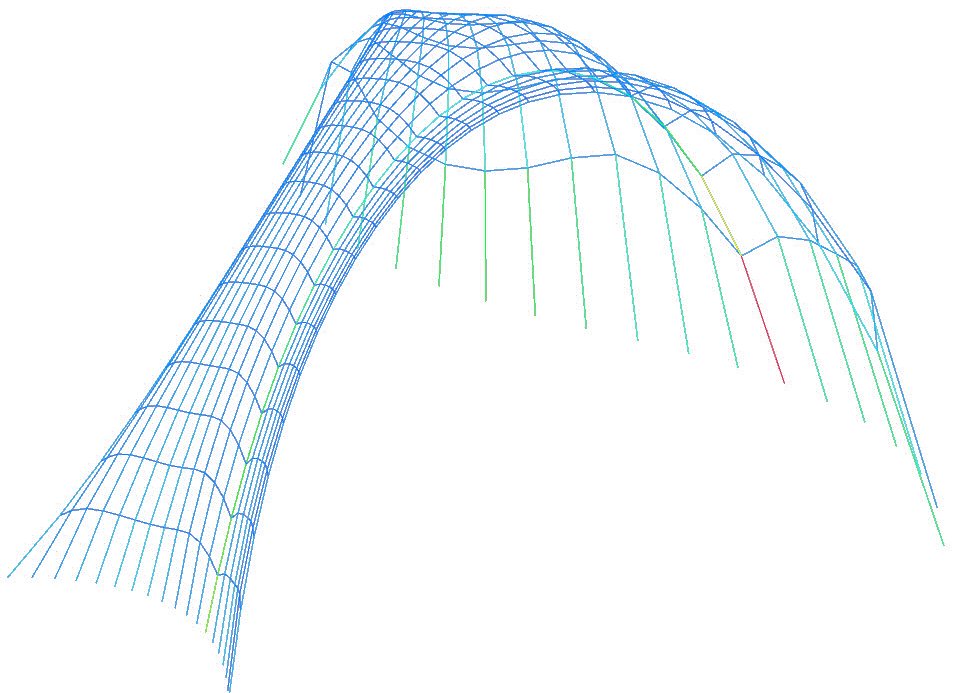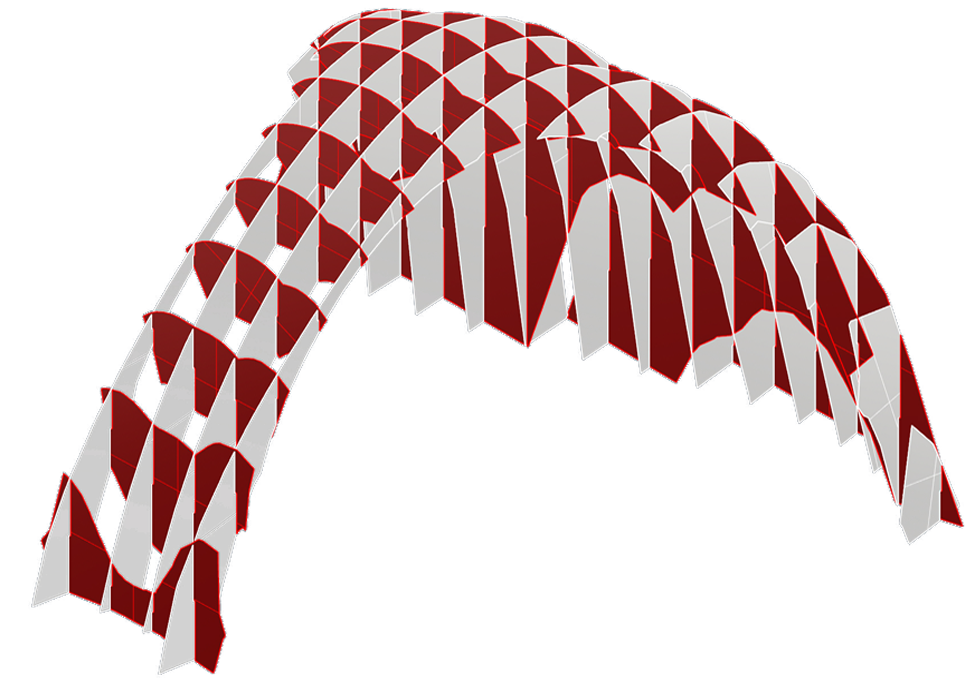Abstract:
A series of mycelium construction experiments focused on staging monolithic “castings” of the increasingly popular bio-material. While several examples of large-scale architectural structure made from mycelium exist, all have used the material in through small-scale custom or modular units. The Tactical Mycelium experiments borrowed construction techniques from fabric-formwork concrete casting to develop tactics for monolithic mycelium construction.
Monolithic Mycelium Experiments
2017 - 2018
Version 2 - Atlanta Georgia | 2018
The second iteration of Tactical Mycelium experiments were conducted at the School of Architecture at the Georgia Institute of Technology. Performed in the context of an experimental construction seminar available to Undergraduate, Graduate (MArch), and Post-Graduate (MS) students. The seminar consisted of several weeks of learning analytical and computational design techniques for compression-only structures. Observations made during the Mycoarch experiment were presented to the students as a prompt for a second tactical construction experiment with monolithic mycelium. Students were were tasked with designing a small monolithic mycelium structure that would be grown out of mycelium-stablized hemp, its internal formwork, and outer soft membrane schemes, for a volume of approximately 0.2 m3 of material from Ecovative.
STUDENT TEAM:
Roberto Bucheli, Keyhan Khaki, Sean Miller, Matt Singleton, Justin Wilson



The small monolithic mycelium structure was designed to be a compression only arch with the aid of RhinoVault, a form-finding plugin for Rhinoceros, by the Block Research Group, ETH-Zurich.

The formwork scheme consisted of an internal waffle-grid skeleton structure made of laser-cut cardboard, a flexible outter membrane made of HDPE plastic sheeting. Threaded rods and washers were used to make surface undulations - March 2018 | Georgia Tech.
The small monolithic mycelium structure grew for just under five days and was air-dried for several weeks - March 2018 | Georgia Tech
Validating the stability of a monolithic mycelium structure design with material and structural primacy - April 2018 | Georgia Tech
Version 1 - St. Cloud, Minnesota | 2017
The origins of this monolithic mycelium construction research stem from a collaborative, experimental project called Tactical Mycelium. One of the outcomes of the project was a monolithically grown, self-supporting mycelium-composite arch. A volume of about 0.4 m3 of mycelium was sourced from Ecovative and grown in a plastic sheeting membrane, cast over the top of an active-bent PVC pipe. The structure was grown outside over five days, after which it was unwrapped, and let to air-dry for several more days. Due to inaccuracies to the shape, and after sustaining rain, the arch collapsed prematurely. As a preliminary experiment, the Mycoarch experiment demonstrated that growing monolithically was possible, and motivated additional research into such techniques.
V1 Team: Bridget Ayers Looby, Rebecca Ramsey, and Jonathan Dessi-Olive
![]()
![]()
![]()
Tactical Mycelium from Courtney Rae Films on Vimeo.
Other Projects: